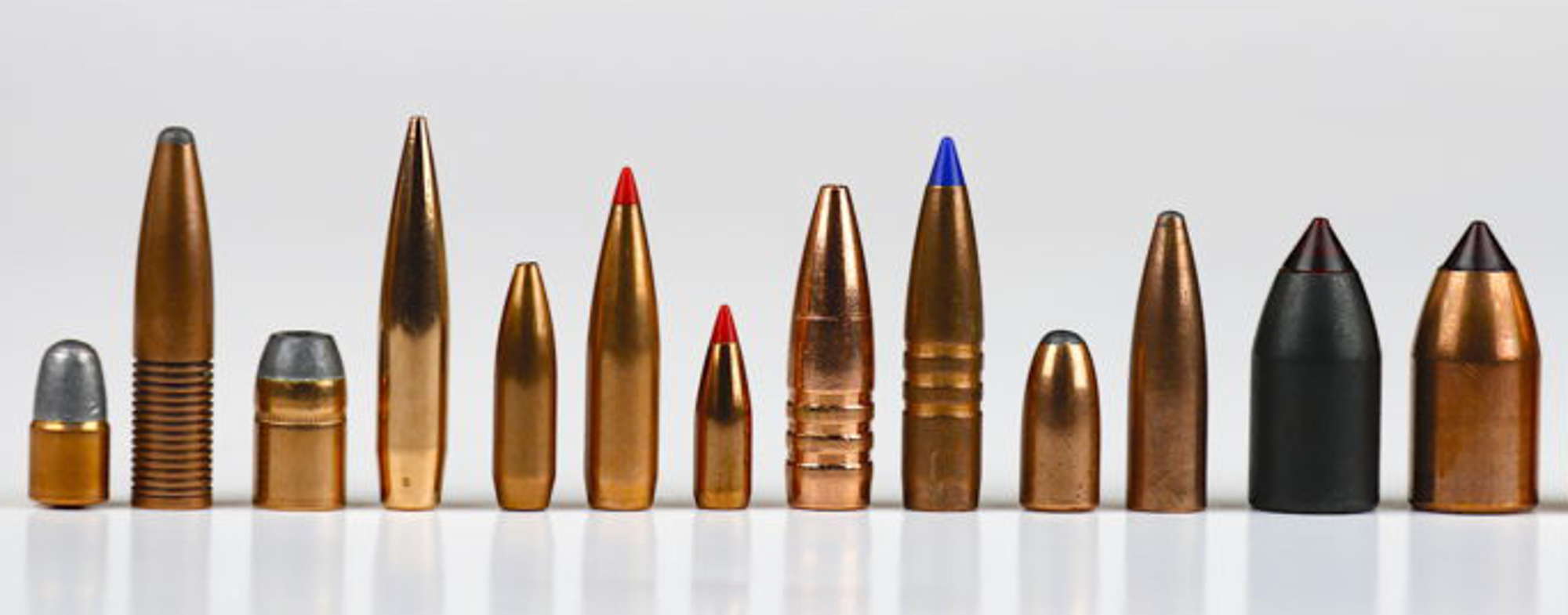The Lord's Caliber: The Tallest Tale Of The Trade
So you got it in mind to buy a long-range rifle. You’ve done all the research on parts and manufacturers, took the time to look up the new hotness on glass, even went and got the budget committee involved and got cleared hot for up to a few thousand dollars. You know what action you’re going to buy, who the barrel maker will be, picked out a stock, trigger and all the accessories. All that’s left is the million dollar question; what caliber to get it chambered in?
Like most things, there’s a smart way to make this decision, and then there’s the way we usually make decisions the first time; we guess. Not to fear. We’re going to walk you through all the considerations, the pros and cons, and help you make the best decision for yourself. Put your thinking caps on, because this is going to get just a bit technical.
Let’s start by talking about so-called “accurate” vs. “inaccurate” calibers
In short, they don’t exist.
As a general rule, there is no one caliber which by intrinsic design, will produce better or worse results than another. The proper way to think of this is whether or not that caliber is capable of being ballistically superior, meaning can it launch higher Ballistic Coefficient (BC) bullets faster or not? Ammunition can be poorly loaded, or loaded improperly for the rifle it is being fired in, but that’s not the fault of the choice of caliber.
For example, the .243 Winchester and 6mm Remington are practically identical. However, the .243 is still a very popular hunting round, while the 6mm Rem is a bit more niche.
Why?
Because when Remington first marketed the round, it also marketed a line of rifles to go along with it. But for some reason, they cut the barrels with too slow a twist and offered the 6mm in less-than-optimal bullet weights. This led to the round having an undeserved reputation as an inaccurate and imprecise cartridge. When loaded with a 105gr bullet, and with a proper twist rate, the 6mm Rem can often outperform the .243Win due to its slightly higher case capacity and can easily compete with the likes of the 6 Creedmoor or 6x47 Lapua.
Before making any decisions, you need to answer one simple question: what do you intend to do with this rifle?
Approach it like an engineering problem; define your need. If you haven’t really walked this dog all the way down the street and back, you might want to think about borrowing a friend’s gun for the afternoon to get your fix for the year on long-range and move on. Frankly, this is just too expensive of a hobby for a person to jump in blind.
You can divide the usages for long-range rifles up into three broad categories - hunting, target and tactical. Each of these areas places special emphasis on certain aspects of shooting and ballistics.
For example, hunting choices place special emphasis on terminal effect, and generally on single/first round placement. Game is unlikely to present an opportunity for follow-up engagement. The firearm parts tend to be lighter, making for easy carry over terrain. Target shooting, by contrast, has almost zero requirement for terminal effect, with the exception of steel targets at distance sometimes needing a heavier caliber for the sake of being able to call splash, or hits. Tactical shooting requires a balance of all these considerations. Let’s break down some of the other questions you should be asking when diving into your own research.

Do you hand load your own rounds?
Being a handloader opens up a wealth of opportunities for non-commercially available ammunition choices. Even within the realm of commercially available calibers, it widens the spectrum of options for bullet weights and component selection to meet your needs. Think the .308 is dead? Try some 155’s loaded like Palma shooters do it, or some 175 TMKs or 185Gr Juggernauts and see how it compares to that 6.5. You’ll be surprised the mileage you can get out of that case. In addition, it’s usually much easier to find the components you are looking for rather than the specific load of commercial ammo. The startup is expensive, but worth it over time for serious shooters.
Is this intended to be a “work rifle?”
If you serve as an LEO or .Mil shooter whose department mandates a specific list of calibers, you will need to make your choices within the legal bounds. Also, if your ammunition is issued, you should consider having your rifle’s chamber throat cut to match the specific loading your unit has selected.
How much gun do you actually need?
It is possible to bring too much. Large magnum calibers provide superior external ballistics and fantastic terminal effect, but there are downsides. Recoil is physically taxing, and in competition, where matches can run into the hundreds of rounds over the course of days, fatigue becomes a real concern even for very physically fit competitors. New shooters can develop a “flinch” reflex as well that can affect how they shoot even lighter-caliber guns. Recoil management also matters if your discipline requires quick follow-up shots. A short action 6mm is far easier to get back on target than a .300 Win Mag, and if you are on the clock, seconds count. Lower recoil can also make it easier to see your own impacts, allowing you to quickly make adjustments without the need for a spotter.

Are you self-financed or do you have some kind of sponsorship?
Ammunition and barrels cost money. A typical weekend precision match can run anywhere from 50-100 rounds of ammunition. That means that besides match fees, you could be spending anywhere from an extra $35-$300 per match, depending on your choices.
.308 can be loaded and purchased for quite cheap. .338 Lapua, not so much. Also, barrels wear out faster as the speed and energy of the projectile increases. .308s have been known to last upwards of 5,000 rounds. 300 Win Mag, you can count yourself lucky if you make it to 2,500. Premium barrels cost about $500+ to swap. If you don’t handload, choose a caliber that will allow you to find the same type of ammunition regularly. Federal Gold Medal Match can vary in price by vendor by over fifty percent and can be tough to find sometimes. Do the math, make a smart choice for yourself.
What kind of terminal effect do you require?
Steel targets at 800? 6.5 or 6mm is all you really need, if you have a good spotter.
Elk at 800? Break out something with a little more oomph. The animal deserves better. Terminal effect is not an exact science, but there are few things to remember. All things being equal, the following rules apply:
- Shot placement matters above all else.
- The more energy delivered to the target, the better.
- A bullet that expands better will deliver its energy more quickly and violently.
- A bullet with a higher sectional density will penetrate deeper.
In addition, you can very easily have too much terminal effect. As mentioned above, certain calibers and loads on steel run a risk of penetrating and ruining the target that you probably shelled out a couple hundred dollars for. Likewise, it can practically vaporize small game making a meat harvest all but impossible. Keep this in mind when you reach for the big magnums.
The choice of caliber that you will select is an intensely personal one and the considerations discussed above are by no means an exhaustive list. Only you know what your needs are and what your budget truly is. The key is to make a smart, reasoned decision based on those needs. The staff here at SOFLETE will be more than happy to talk it out with you and help you make a good decision. Leave us a note in the comments. And shoot straight!
DIE LIVING
Major Clutch and John Warchild have combined forces for all future long range articles. From now on, we'll just be referencing Warchild and Clutch and let them fill in the blanks on their own.
John Warchild is a Senior U.S. Army Sniper and the Marketing Coordinator at Leupold & Stevens, Inc. He lives in the PNW, loves the long range game, and is an adrenaline junkie like the rest off the SOFLETE crew.
Major Clutch is an active duty officer who shoots long range competitively in between deployments, overseas assignments, and helping raise his family of heathens. He is a huge nerd who spends an inordinate amount of time reading and re-loading.
We at SOFLETE couldn't think of better guys to explain the science of marksmanship to our readers.





